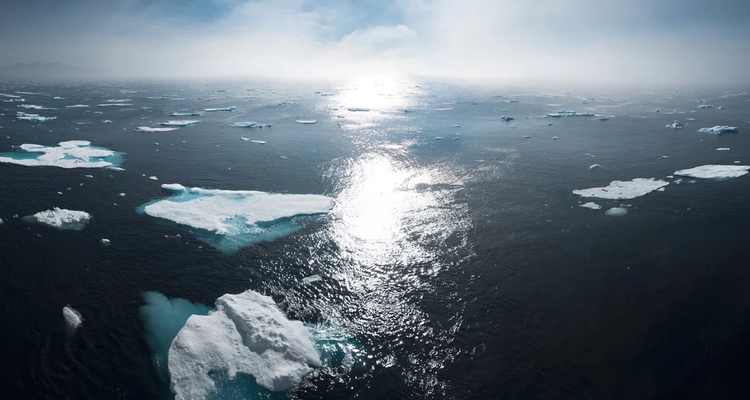
How We Offset Our Carbon Footprint And Why
By Thomas Panton
There has been A LOT of debate around the concept of carbon offsetting.
Before we begin, let's give a quick definition of the term. Very simply put, carbon offsetting is the act of trying to 'balance out' your carbon footprint by investing into projects that either reduce or help store carbon emissions.
By its very definition there's a question you might ask about the term offsetting: it's all very well 'counteracting' or trying to rebalance things after the fact, but what about being greener and reducing your impact to begin with?
This is a question that shouldn't be avoided: offsetting is part of a much bigger process.
Let's get into it, starting with why offsetting exists and why it's important.
Why Offsetting Is Important
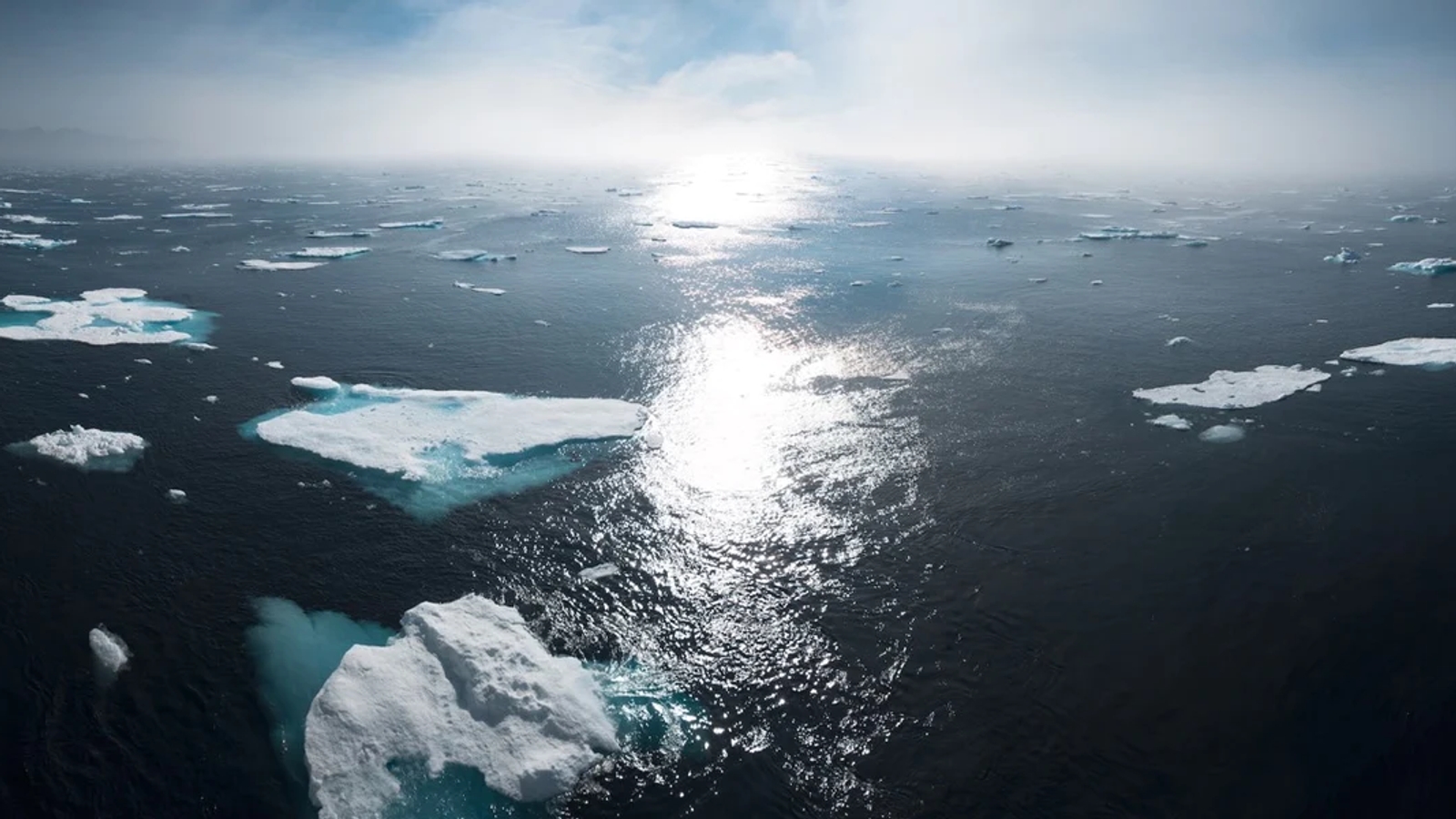
It’s widely agreed within the scientific community that our impact as a species on the planet is driving rapidly accelerated climate change.
In fact, even oil companies like Shell and BP have now acknowledged that we are causing climate change, and say so on their own websites publicly.
When it comes to talking about climate change, the focus has mainly been on the carbon emissions equivalent (or CO2e) that countries, businesses and industry are pumping into the atmosphere in aid of progress and development.
It isn’t inherently wrong to strive for a better quality of life. During the last century huge improvements in connectivity, commerce, communication, and healthcare has led to an increase in quality of life across the globe.
However, the use of finite resources to achieve this – particularly fossil fuels – has caused deep distress to our fragile ecosystems and atmosphere.
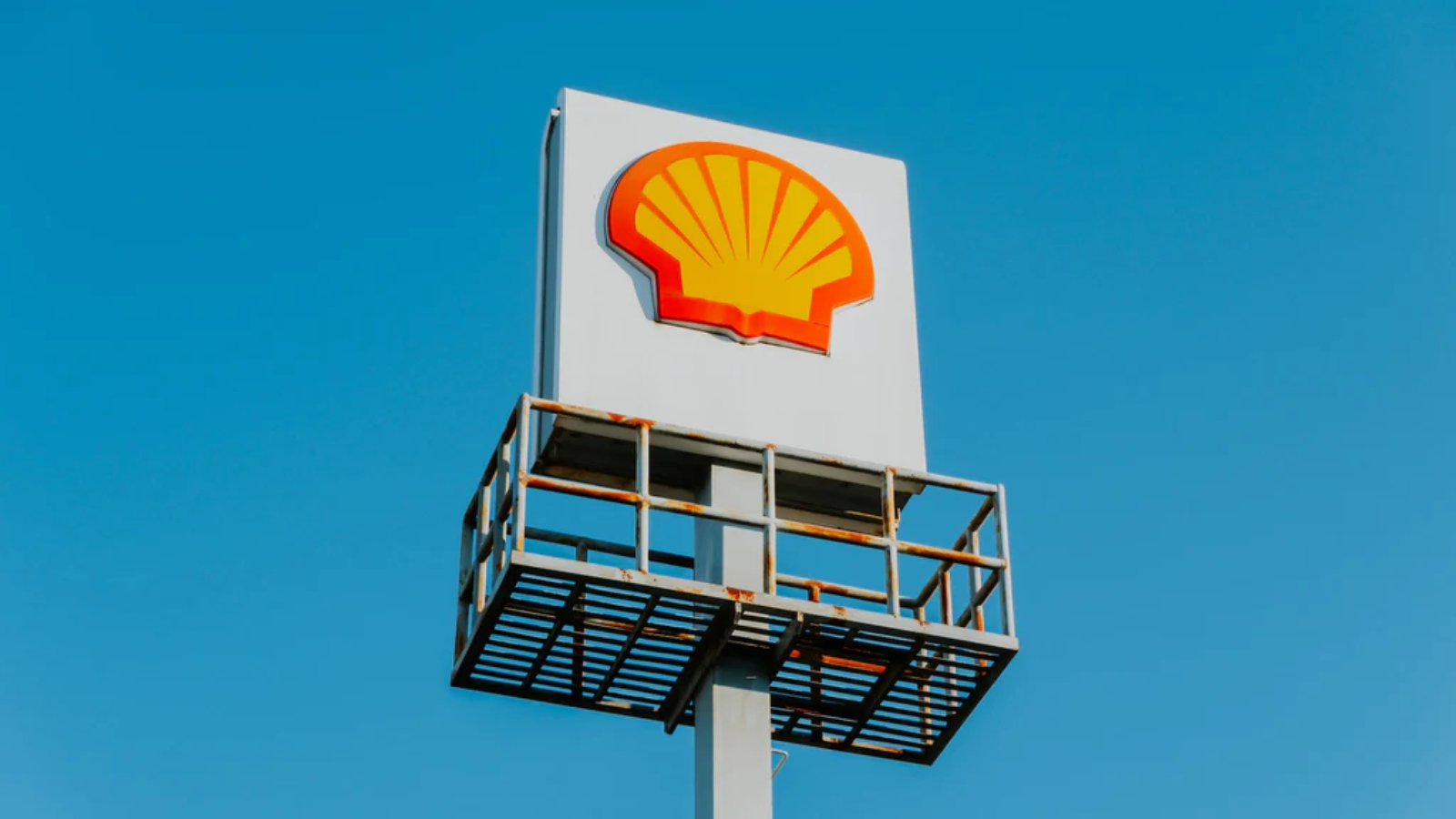
Without getting geeky, it is highly unlikely we can keep emissions down below a 1.5℃ increase compared to 1990 levels. Even hitting the 2℃ target is looking more and more unlikely.
This is leading to increasing pressure on governments and businesses to take more radical measures to reduce their collective emissions over the next 20 years.
I would argue this needs to be brought forward to the next 7 years. A tough beast to battle.
However, it is not without hope.
Positive Strides Forward
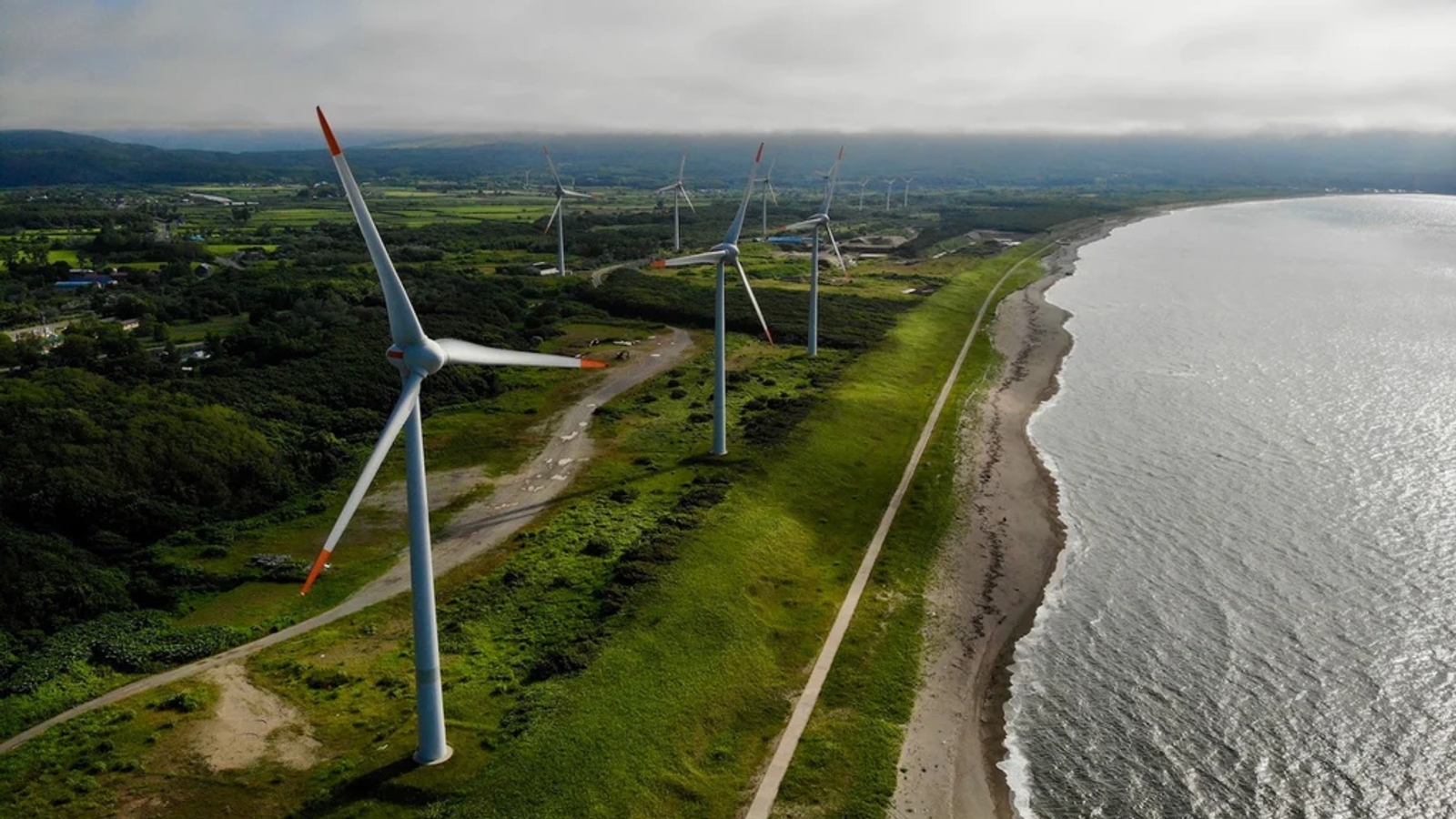
We're starting to see a greater understanding among business owners when it comes to tackling the challenge to begin with.
That means many people are looking across their business to see where they can reduce their impact on the environment – from switching to an electric fleet of vehicles and introducing cycle to work schemes, to bringing in better waste management, recycling and composting.
And we're now seeing more ways for companies to reduce their emissions, as more technologies to solve issues within climate change become more readily available.
As awareness of how important it is for everyone to do their bit grows, more people are going into the sustainability profession, studying the field at school and university, and as a result companies are springing up to offer these solutions to people and business.
The first step that companies can take to reduce their impact is to track and report on their scope 1, 2, and 3 emissions.
“What the heck are those?” I hear you say. Here's a quick overview.
Scope Emissions

In order to measure your impact as a company, you have to look at these three different types (or ‘scopes’) of emissions you’re responsible for creating.
Each scope represents a different step removed from what you might think of as your ‘direct activities’ as a company. Let’s break these down.
⟶ Scope 1 (direct emissions)
Scope 1 emissions relate to things very close to your company and its direct activities. This would include physical assets which the company owns, like your office, company vehicles, or a power generator you run. These are usually easiest to measure as they are directly related to you.
⟶ Scope 2 (indirect emissions)
Scope 2 emissions are not far removed from your scope 1, for instance heating or natural gas used for your office. The difference is that they are purchased from a third-party or sourced from outside the company.
⟶ Scope 3 (indirect emissions)
Scope 3 emissions are much more difficult to account for, but since they can include many different types of services your company pays for or creates, scope 3 can make up the biggest part of your impact. Scope 3 can be either raw materials purchased by the company (upstream), or it could be the distribution, use and end of life of products sold by the company (downstream).
- Upstream emissions could include waste from operations, transportation and distribution, employee commutes, leased assets, and purchased goods and services (for example, an accountancy your business uses).
- Downstream emissions could include investments made by the company, the use of products sold, end of life treatment of products the company sells.
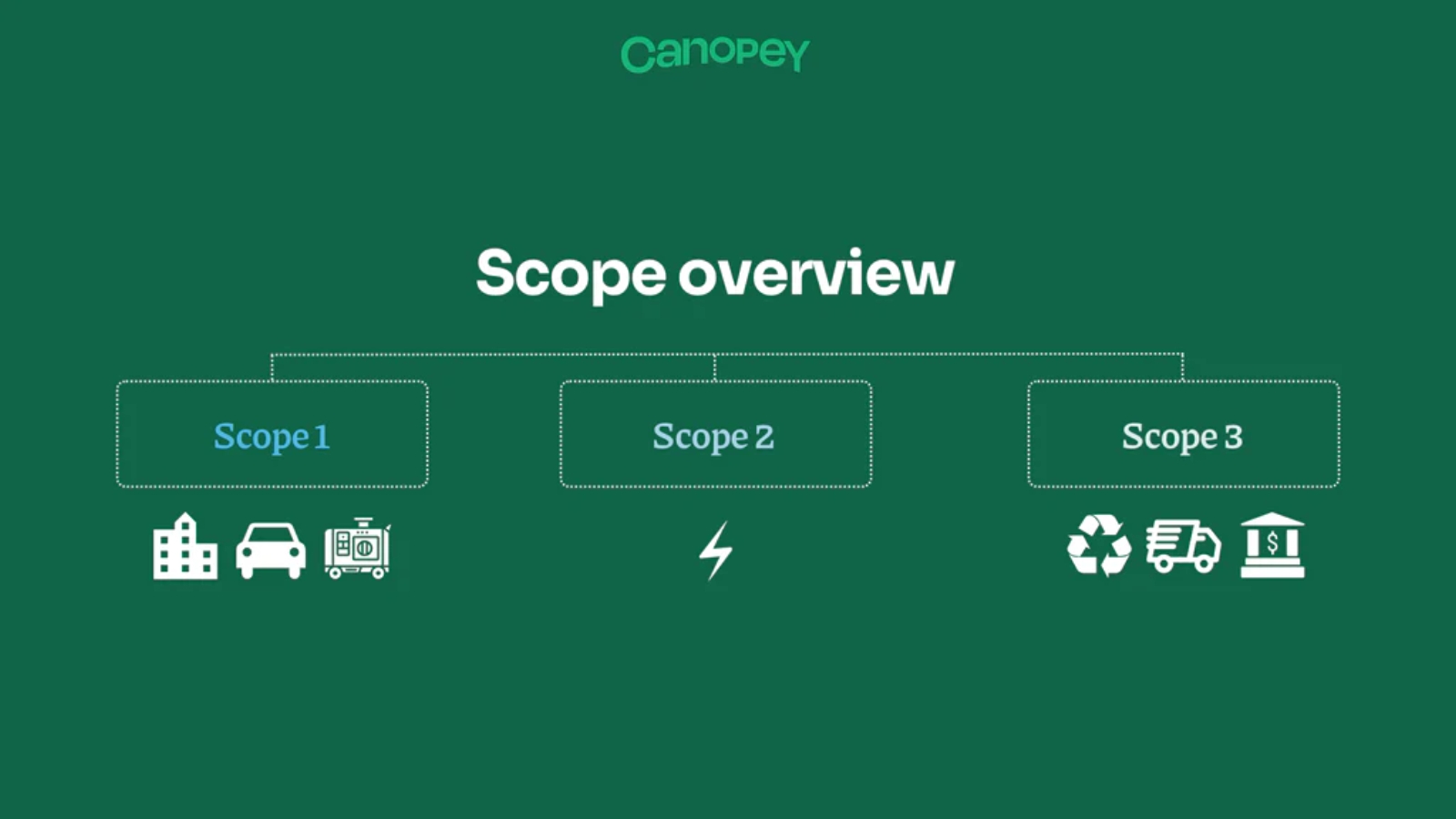
There are really fantastic tools out there for calculating your different scope emissions but they can be expensive. Thankfully, there are some more cost effective options.
Normative.io
Normative offers a full package to give you a detailed analysis of your carbon footprint. But what’s even better is that they have partnered with the SME Climate Hub to give use of a free tool which can be used to get a top level analysis of the carbon footprint of your company. This is a fantastic starting point for almost every small company. You can try it out on the SME Climate Hub website.
Ecologi
Ecologi has launched their own carbon accounting software, Ecologi Zero, for service based companies that use Xero accounting software. This is great because as they build this out it’ll mean you can track, monitor, and report your company emissions. With this insight into your company’s impact you can then work out how to reduce and offset your emissions.
At Canopey we believe this is the first step for building the future of businesses. Once you understand your impact as a company you can begin to strategise how you’ll reduce your impact!
Our Emissions
As a super small pre-launch startup with two employees, from January 2022 to December 2022 pretty much our entire impact came from our suppliers.
Here’s a simple breakdown, which we used Normative.io to create:
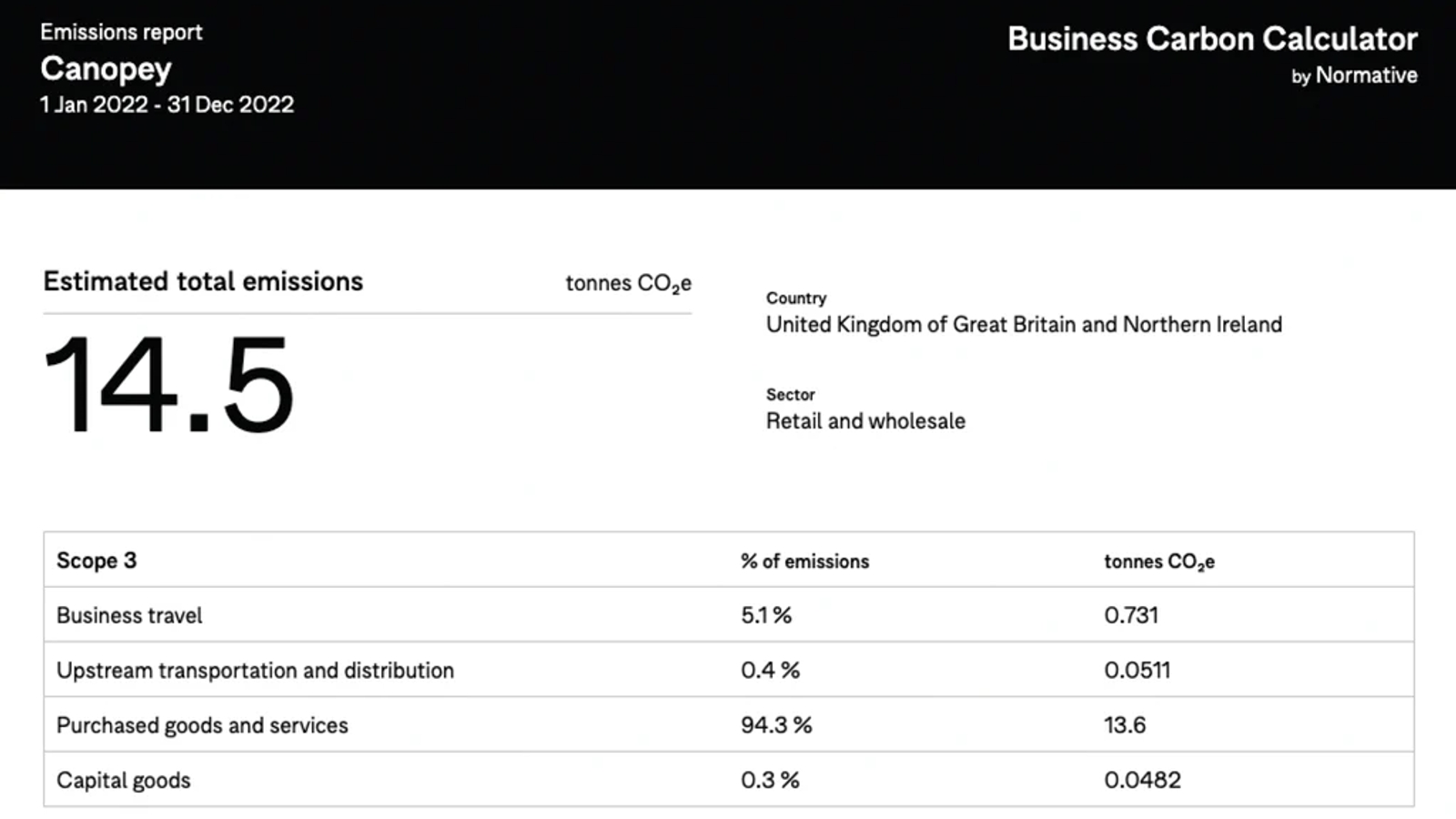
Now that we have this, the next thing to do is work out where we can reduce your impact.
What’s crazy for us is that our impact is probably better than our calculation because we use brilliant low impact service providers like Triple Bottom Line (accounting) and Starling (banking) which has a better environmental ranking than almost all other banks in the UK.
When it comes to our office, we are headquartered at one of the most environmentally friendly buildings in the world. That helps quite a bit.
So while Normative.io will estimate a generic average based on the service or type of building (e.g accounting services, office buildings of X size) ours is highly likely to be lower impact than most.
There are some great service providers who can help guide you through these changes such as Small99, and Brownee.
But there’s always going to be something left. Unless your business itself is in the business of carbon sequestration it’s almost impossible to avoid having an impact on the world around you.
For Canopey our focus will need to be on how we develop our platform. We’ve already made some changes from last year like where we’re hosting (we’ll soon be using Google Cloud (https://cloud.google.com/sustainability) servers which are run entirely using renewable energy).
But, again, there is still likely to be some impact. This is where the question of offsetting arises.
What are the Pros and Cons of Offsetting?
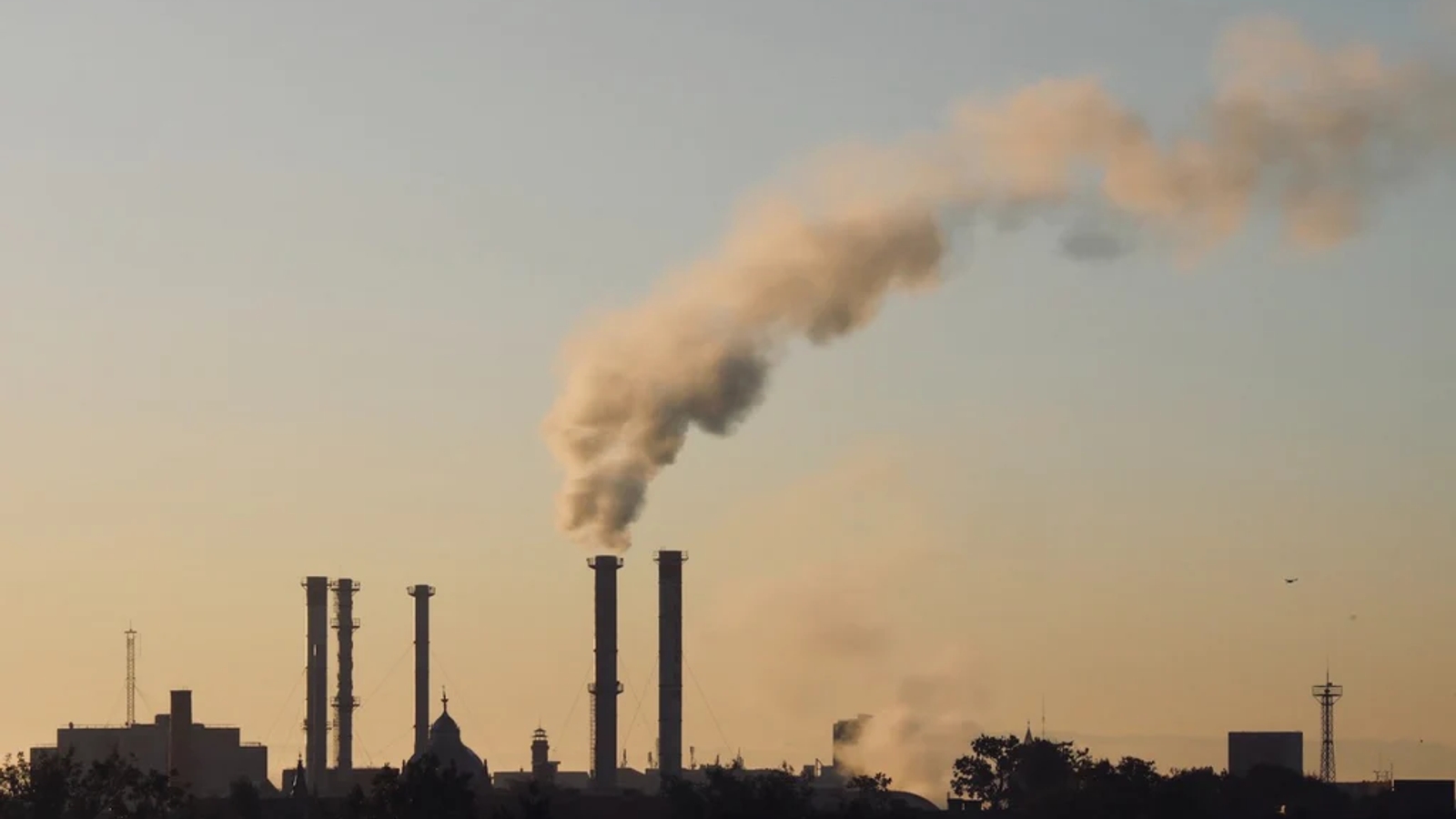
Generally speaking, offsetting is not the enemy here. As with many things in life, it’s the way that offsetting is used that can be problematic.
As a company, your responsibility is to reduce as much as you can before you even consider offsetting. Unfortunately many companies simply calculate and then offset because they have the capital to do so.
A company doing this can then technically claim Net Zero status (offsetting as much as you emit), and in some cases Carbon Positive status (offsetting more than you emit).
A good analogy for this would be unplugging an overflowing bath while leaving the tap running.
But this is bad practice. What you want to do is unplug the bath and turn the tap off at the same time.
Unfortunately, businesses are not only leaving the tap running – they’re opening it up further.
This is how we can visualise reducing carbon emissions globally.
In any case, at Canopey we’ve made efforts to do both parts of the analogy. We’ve not only committed to the SME Climate Hub’s Climate Commitment to reach Net Zero by 2030, but we’re proud to say that we have actually already achieved Carbon Positivity as a company, through paying for carbon offsets with Ecologi:
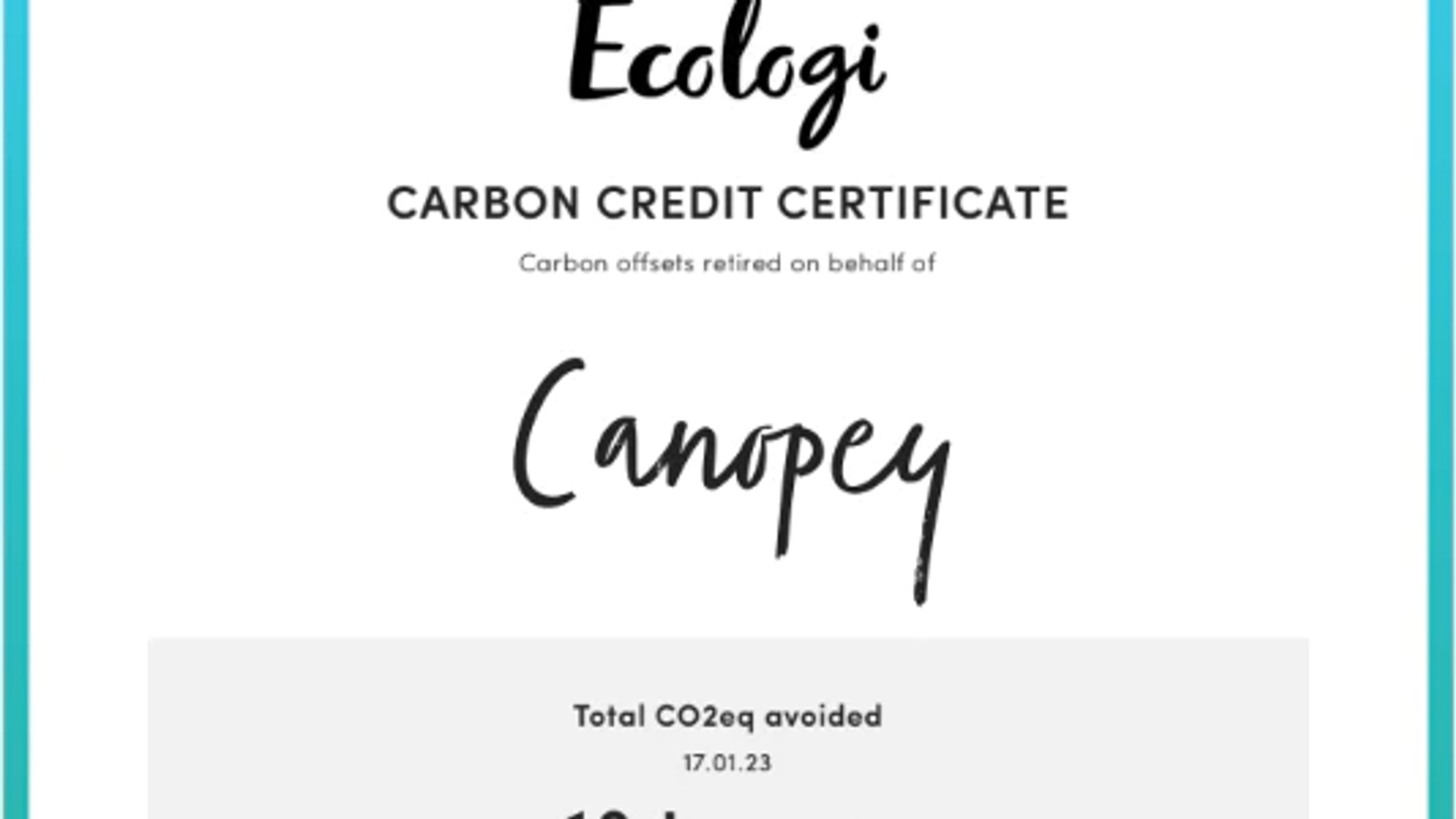
As you can see we’ve supported the carbon removal or avoidance of approximately 18 tonnes of carbon emissions from the atmosphere.
This is compared to the impact of 14.5 tonnes estimated by Normative.io for the last year of operations. That also includes having a Climate Positive Workforce. ✊
Before you go ahead and offset your remaining impact as a company, you need to check they’re legitimate.
To check this, carbon offsets must be certified. We recommend checking for the Gold Standard.
Here's a breakdown of the projects we've supported through Ecologi:
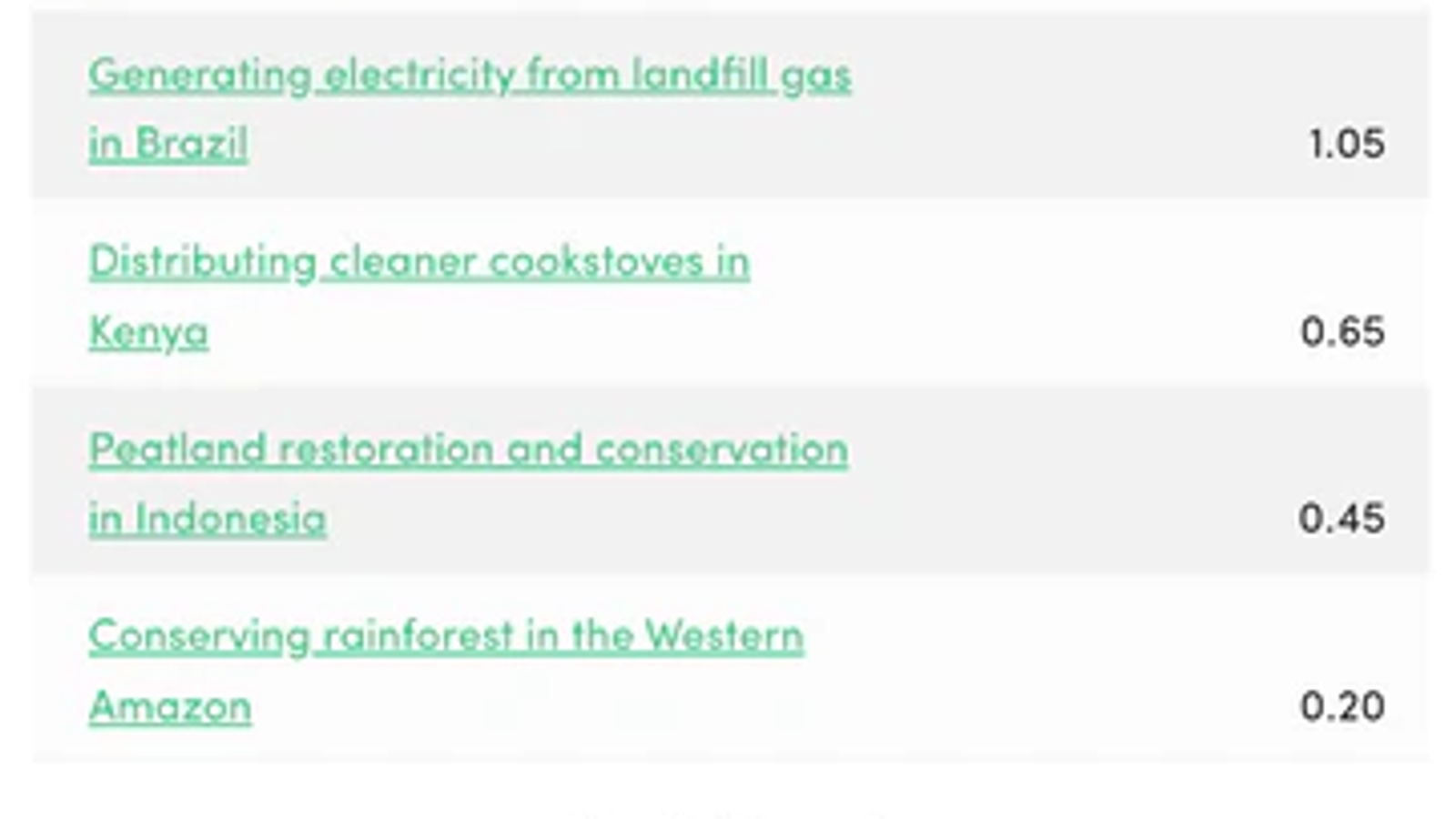
You can check out our full Ecologi profile to see everything we've supported and where our tree planting schemes are.
The Question of Tree Planting
What about the trees that we’ve planted?!
This is a whole debate within the climate community: should tree planting count as offsetting?
Technically speaking, they do – over time. However, this assumes that the tree has survived, that the efficiency of carbon sequestration (the process of a tree storing carbon from the atmosphere) has been measured consistently, and a whole bunch of other stuff. It’s complicated.
Ecologi explains how they check up on these things with their partner Eden Reforestation Projects, and why they don’t include tree planting in their carbon offsets. You can read more on Ecologi's FAQ page.
Saying that, humanity has cut down approximately 50% of the world’s trees and continues to deforest about 15 billion trees every single year. In our view we have a collective responsibility to reforest the earth, and for us we ought to live up to our namesake!
And yes, ultimately that should mean we’ll end up sequestering a fair bit more carbon from the atmosphere at the same time.
Final Thoughts
So there you have it. We’re putting our money where our mouth is and budgeting in the ways that we can be a force of good on the planet, whilst still giving you accessible ways of supporting companies that care.
We’ve also started our tree planting drive. While we don't count this as an offset, we're proud to have planted more than 10,000 trees, growing our very own real life canopy.
But we only did this after first considering and reducing our impact whenever we made a decision about the products, services and offices we use as a company.
Are you a business looking to start your journey with Ecologi?
Help us out and get your first 30 trees for free by using our Ecologi referral link and adding to the Canopey forest.
Thanks for reading,
Thomas Panton
Founder & CEO



